|
|
||
|
Difficulty
in urination (dysuria) in Singapore cats - Case
studies Dr Sing Kong Yuen, BVMS (Glasgow), MRCVS Date: 04 March, 2015 First case was written around 2000 Second case was written in Mar 2015 |
||
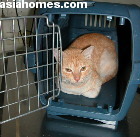 Case
study in 2000 Case
study in 2000 |
||
|
"The owner's previous male cat had the same problem of dysuria (difficulty in passing urine)," I said as I presented a 3-year-old male cat to the Senior Veterinarian, Dr Foo for radiography of the kidneys and bladder. "He died a few weeks later." Deaths from urinary bladder obstruction would occur as no veterinarian could save every case and many owners had not complied with instructions to take medication, change to a calculolytic diet or go for a follow up. In most cases, the cat refused to take medication or accept a new diet and the owner could not do much. I elaborated, "The owner did say that she had left the post-operative care of her first case to her mother as she was overseas. The cat would not take the medication and her mother had not consulted any veterinarian. The cat then died. Probably due to urinary bladder rupture and or kidney failure." "No point taking X-rays," Dr Foo said. "Nothing will be seen as the cat with urolithiasis do not have solid stones." "There may be obstruction by stones further up the bladder, in the ureter or in the kidneys," I said. "Although urethral obstruction in the cat is usually caused by an organic matrix which would not be seen clearly on X-rays, sometimes there may be crystals." X-rays
add to the veterinary costs and in the dog-eat-dog veterinary practices of
Singapore, it was the least cost that attract the average pet owner.
Overheads are high and if there are no clients, there will be no revenue
and the practice will have to close within a year or two. The
bladder obstruction was cleared and the bladder was pressed to allow more urine
to flow out. It was a relief as if we had urinary bladder obstruction.
Nurse Ann's joy was short-lived. The urine flow stopped suddenly. The
male cat urethra is very narrow and it was blocked again. A
neck collar was worn to prevent the cat from biting off the catheter
which was sutured to the skin. Dr Foo said that the cat could go home
with medication and that would mean least cost. But would that be in the
interest of the cat? It was not easy for most Singapore owners to
medicate a cat. "Yes," she said and that was all. There were no return calls from her
despite leaving messages on her mobile phone. Singaporeans seldom
return phone calls unless they need to as they usually lead a hectic
life. |
||
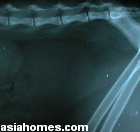 |
||
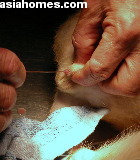 |
||
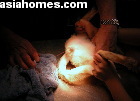 |
||
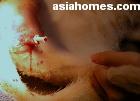 |
||
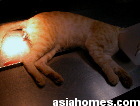 |
||
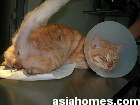 |
||
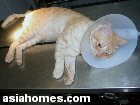 |
||
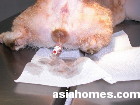 |
||
|
Case study
around 2015 On July 8, 2013, a grey male neutered 12-year-old cat had difficulty in urination for 2 days. I palpated the bladder. It was not swollen and so there was no urethral obstruction. 7 years ago, he had urethral obstruction and was catheterised by a vet and had recovered. He was fed dry food mainly and BURP canned food since 4 months ago. I gave antibiotics. I advised dental work and change to feline C/D diet. Then in Feb 4, 2014, he had dysuria again for one day. He lost appetite. He meowed a lot after urination and so the owner brought him to see me. The bladder was painful on palpation but was not distended to omuch. No vomiting or drinking or peeing excessively. Blood test showed a higher level of urea 14.8 (7.2-10.8) and creatinine 177 (71-160). Platelets were low at 238 (300-800). I gave dextrose saline SC, catheterised and irrigated the bladder with saline, gave antibiotics and Vit K1. X-rays showed a swollen left kidney (tumour or swelling?). I phoned 2 days later and the grey cat was back to normal. He could control his bladder. No news from the lady owner till one year later in March 2, 2015, asking about the price of dry food, Prescription Diet K/D and wanting to buy feline C/D. In November 2014, she had consulted another vet. The cat had started to vomit prior to boarding him for 2.5 weeks from Sep to Oct 2014. He vomited more often and became thinner. So, she consulted the other vet who took a blood test which showed slightly elevated urea and creatinine levels. He prescribed K/D. "How long did it take the cat to recover from
vomiting?" I asked the working lady. She was in her
late 40s. She had rushed back from work to buy the food. The cat was fed another brand of dry food and BURP in the past but now she switched to dry K/D. "My cat prefers the wet food nowadays," she said when we met today. "I did advise dental work as the gums will be painful when the cat eats
dry food." The cat would be on one tablespoon of K/D canned, canned BURP with low salt day and night and dry food K/D available. The cat did not have abnormal drinking. It is a cat's destiny as to whether he has dentistry to relieve his tooth ache. Just like people as to where we live and earn a living. One client told me his friend's 11-year-old girl was missing for the past 3 days after going to the cinema in a country outside Singapore. This cat may not have kidney disease as there are no signs of drinking excessively. If the cat had dental work 2 years ago to extract the rotten loose
teeth, he would have a better quality of life but some
cat owners do not want to incur medical costs. A cat can live a
longer life if his diet and health are monitored
closely together with your vet. Vomiting and weight loss are signs of
poor health, not necessary kidney disease as the cat does not drink a lot
of water. It could just be bacterial infections from the rotten teeth and
a simple dental work by the vet would have made this cat much more
lively. |
||
|
OTHER CASE STUDIES |
||
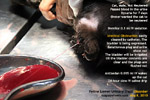 |
||
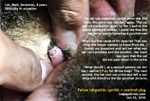 |
||
| My 8-year-old cat can't pee | ||
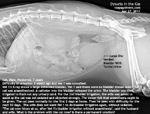 |
||
| lst FLUTD. The cat can't pee again | ||
|
|